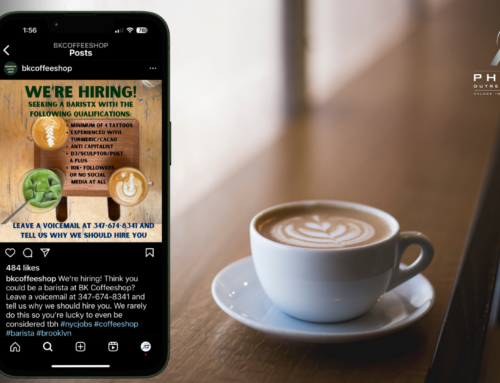Workforce development is where stories of growth, challenge, and success intertwine, and the art of storytelling stands as a beacon, guiding learners and leaders alike towards new horizons. Imagine the power of a well-told tale, one that not only informs but captivates, pulling its audience along on a journey of discovery and transformation. How, you ask? Through the magic of literary devices.
These tools of the trade, often reserved for poets and novelists, are equally potent in the hands of workforce development professionals. They can turn a simple narrative into a compelling saga of personal and professional evolution. Let’s dive into some of these devices, unravel their meanings, and explore how they can be wielded to enchant your audience, leaving them hanging on your every word and eager for more.
Metaphor and Simile: The Comparison Masters
Diving deeper into the realm of metaphors and similes, let’s explore how these literary devices act as the comparison masters, adept at drawing connections that illuminate and enrich our understanding of the workforce development world.
- Metaphors – The Direct Connectors: Metaphors serve as direct bridges between two unrelated things, suggesting a deeper level of similarity. In the context of workforce development, a metaphor can transform an abstract concept into something tangible and relatable. For example, consider the phrase, “The job market is a battleground.” This metaphor conveys the competitive nature of job hunting, evoking images of strategy, resilience, and victory without explicitly stating these elements. It suggests that just as a soldier must be prepared, strategic, and resilient to succeed in battle, so must job seekers in their quest for employment.
- Similes – The Likeable Comparisons: Similes, on the other hand, make their comparisons with the help of “like” or “as,” softening the connection yet still drawing a vivid parallel. When we say, “Job hunting is like searching for a needle in a haystack,” we use a simile to emphasize the daunting and often overwhelming task of finding the right job among countless opportunities. It paints a picture of meticulous search and the patience required, inviting the audience to empathize with the job seeker’s challenge.
- Crafting Vivid Imagery: Both metaphors and similes are powerful tools for crafting imagery that sticks with the audience. By comparing the journey of career development or job seeking to universal experiences, such as navigating an ocean or engaging in battle, these devices make complex ideas more accessible and engaging. They allow the audience to visualize the challenges and triumphs of workforce development in a new light, making the narrative more memorable.
- Enhancing Emotional Connection: Moreover, metaphors and similes enhance the emotional connection between the storyteller and the audience. When we hear that “navigating the job market is like sailing the vast ocean,” we’re not just being told about the unpredictability and vastness of the job market; we’re being invited to feel the solitude, the vastness, the challenge, and the adventure. This emotional resonance makes the message more compelling and can inspire action.
Tips for Using Metaphors and Similes in Workforce Development
- Choose Relatable Comparisons: Select metaphors and similes that evoke experiences or scenes familiar to your audience. The more relatable the comparison, the stronger the connection.
- Use Sparingly for Impact: While powerful, overuse of metaphors and similes can overwhelm your message. Use them strategically for key points you want to highlight.
- Mix and Match: Don’t be afraid to use both metaphors and similes in your narrative. They each have unique strengths in drawing comparisons and enriching the story.
- Align with Your Message: Ensure that your chosen metaphors and similes align with the overall message and tone of your narrative. A mismatched metaphor can confuse rather than clarify.
By mastering the art of metaphors and similes, workforce development professionals can elevate their storytelling, making their narratives not just heard, but felt and remembered. These devices are not just embellishments but essential tools in bridging the gap between the storyteller and the audience, turning abstract concepts into vivid, relatable stories that inspire and motivate.
Example in Action: “Jumping into our program is like strapping on a jetpack for your career; suddenly, you’re soaring over obstacles that used to slow you down, navigating the job market with the ease of a bird gliding through the sky.”
Why it Works: This sample works well because it combines a metaphor (“strapping on a jetpack for your career”) and a simile (“navigating the job market with the ease of a bird gliding through the sky”) in a friendly and engaging way. The metaphor instantly conjures an exciting image of rapid acceleration and upward mobility, making the idea of joining the program feel like an empowering action that can dramatically speed up one’s career progress. Meanwhile, the simile complements this by likening the experience to the effortless flight of a bird, suggesting that the program makes navigating the complex job market smooth and natural. Both elements together create a vivid, memorable picture of how the program can transform the daunting task of job searching and career advancement into an exhilarating and seamless journey, making the message relatable, aspirational, and motivating.
Storytelling in Action: The Power of Personal Narratives
The potency of storytelling in workforce development cannot be overstated. It’s the personal narratives, the tales of individuals who have navigated the treacherous waters of career development, that truly resonate with listeners and readers. These stories of real-life challenges, setbacks, and ultimate triumphs serve not just as testimonials to the efficacy of a program or method but as beacons of hope and sources of inspiration for those on similar journeys.
- The Connective Power of Personal Narratives: Personal narratives are the lifeblood of effective storytelling because they foster a deep, emotional connection with the audience. When we share “John’s journey from intern to CEO,” we’re doing more than recounting a series of events; we’re inviting our audience into a shared space of empathy, aspiration, and human experience. This story becomes a mirror in which they can see their own potential and a map that shows the path to their own success.
- Building Relatability and Trust: Personal stories build relatability and trust. They break down the abstract concepts of professional development into tangible, lived experiences that listeners can relate to. By hearing about John’s initial struggles, his moments of doubt, his breakthroughs, and ultimately, his success, the narrative becomes more than just an account; it becomes a testament to resilience and possibility. This relatability fosters trust in the program or methods being discussed, as they are no longer theoretical advantages but proven pathways to success.
- Crafting Aspirational Tales: Personal narratives are inherently aspirational. They tap into the universal desire for growth, improvement, and achievement. When a story like John’s is shared, it’s not just his success that shines through; it’s the promise that such success is attainable for others. It transforms the narrative from a simple recounting of events into a powerful motivational tool. It says, “This could be you.”
- Enhancing Engagement Through Emotional Resonance: The emotional resonance of personal stories significantly enhances audience engagement. Humans are wired to respond to stories, particularly those that evoke strong emotions such as joy, fear, sadness, and hope. By engaging with the emotional arc of a personal narrative, the audience becomes invested in the outcome, rooting for the protagonist through their trials and celebrating their victories as if they were their own. This emotional investment is what turns passive listeners into active participants, eager to embark on their own journeys of transformation.
Tips for Leveraging Personal Narratives
- Authenticity is Key: Ensure the stories you share are authentic and genuine. Authenticity breeds trust and deepens the emotional impact of the narrative.
- Detail Matters: The power of a story often lies in the details. Sharing specific challenges faced, emotions experienced, and lessons learned adds depth and relatability.
- Diversity of Stories: Share a variety of stories to reflect the diverse experiences and backgrounds of your audience. This inclusivity ensures that more people see themselves reflected in the narratives.
- Connect the Dots: Always tie the personal narrative back to the broader themes of your message. Highlight how the individual’s journey exemplifies the benefits of the program, technique, or skill you’re advocating for.
- Encourage Story Sharing: Foster a community of storytelling by encouraging others to share their own narratives. This not only amplifies the diversity of experiences but also reinforces the community and support network aspect of workforce development.
The power of personal narratives in storytelling, particularly within workforce development, lies in their ability to connect, inspire, and motivate. By effectively leveraging these tales of real-life challenges and triumphs, professionals in this field can transform their audience’s perspective, turning abstract concepts into pathways of possibility and aspiration.
Example in Action: “Let me tell you about Jamie, who joined our program feeling like a tiny boat lost at sea in the job market. Fast forward six months, and Jamie’s now the captain of their own career ship, steering confidently through opportunities they never thought possible.”
Why it Works: This sentence works because it uses a personal narrative to bring the impact of the workforce development program to life. By telling Jamie’s story, it moves from abstract promises to concrete evidence of success, making the program’s benefits tangible and relatable. The conversational tone, coupled with the journey from uncertainty to leadership, taps into the listener’s emotions, fostering a connection and inspiring them to envision a similar transformation in their own lives. The use of a vivid metaphor (“a tiny boat lost at sea” becoming the “captain of their own career ship”) enhances the narrative’s impact, making Jamie’s journey not just a success story, but an engaging and motivational tale.
Alliteration and Assonance: The Sound of Success
Alliteration and assonance, the delightful duo of sound-based literary devices, can infuse your workforce development narratives with a lyrical, memorable quality that sticks with your audience long after the message has been delivered. These techniques don’t just beautify language; they wield the power to make your message more impactful and enduring. Let’s delve into how each one contributes to the sound of success in your storytelling.
- Alliteration – The Consonant Chorus: Alliteration occurs when the same consonant sound is repeated at the beginning of closely connected words. It’s like a rhythm in music that you can’t help but tap your foot to. In the context of workforce development, alliteration can serve as a powerful mnemonic device, making your key points sticky and memorable. For instance, “Build, Boost, Become: Unleash Your Potential with Our Programs” not only sounds pleasing but also creates a memorable tagline that encapsulates the essence of growth and transformation offered by the program.
- Assonance: The Vowel Symphony: Assonance is the repetition of vowel sounds in nearby words. It’s subtler than alliteration but equally effective in giving your language a lyrical quality. Assonance can create a mood or reinforce the emotional undertone of your message. Consider a line like, “Achieve your dreams and seize your team’s esteem.” Here, the repetition of the “ee” sound weaves a sense of achievement and appreciation through the narrative, enhancing the emotional appeal.
- Enhancing Engagement Through Sound: The beauty of alliteration and assonance lies not just in their ability to decorate language but in their power to engage and captivate. These devices can transform a mundane message into a memorable mantra, encouraging your audience to listen more closely and retain the information longer. In a field where differentiation can be a challenge, using sound creatively can set your message apart, making it not just heard but felt and remembered.
- Creating Cohesion and Rhythm: Beyond memorability, alliteration and assonance contribute to the cohesion and rhythm of your narrative. They can act as signposts, highlighting important points and guiding the listener through the narrative flow. This rhythmic quality not only enhances the pleasure of listening but also aids in comprehension, as the audience is more likely to follow and absorb a message that feels harmonious and well-structured.
Tips for Using Alliteration and Assonance
- Purpose Over Prettiness: Use these devices to enhance your message, not overshadow it. The goal is to make your key points more impactful, not to distract with overly ornate language.
- Moderation is Key: While alliteration and assonance can be effective, overuse can lead to a message that feels forced or gimmicky. Use them strategically for emphasis.
- Match the Mood: Choose sounds that complement the mood you’re aiming to convey. Soft sounds can soothe and inspire, while harsher sounds might be used to convey urgency or challenge.
- Practice Out Loud: The true effect of alliteration and assonance is best gauged by hearing them. Practice your narrative out loud to ensure the sounds enhance the delivery as intended.
- Integrate with Other Devices: Combine alliteration and assonance with other literary devices like metaphors and personal narratives for a rich, multi-layered effect.
Incorporating alliteration and assonance into your workforce development storytelling isn’t just about adding flair; it’s about crafting messages that resonate on a deeper level, ensuring they linger in the minds and hearts of your audience. By skillfully deploying these sounds of success, you can transform your narratives from simple information delivery to memorable, motivational experiences that inspire action and change.
Example in Action: “Step into success with our series, where we skillfully sculpt students into standout stars of their sector.”
Why it Works: This example works well because it uses alliteration (“Step into success,” “sculpt students into standout stars”) and assonance (“skillfully sculpt students”) to create a rhythmic and memorable sentence. The repeated “s” sounds in alliteration and the “u” sounds in assonance add a musical quality to the message, making it more engaging and pleasant to hear or read. This not only catches the listener’s attention but also makes the sentence more memorable, enhancing the likelihood that the message sticks. Using these sound devices in a conversational tone helps to keep the message light and approachable, while still highlighting the program’s effectiveness in transforming participants into skilled professionals.
Hyperbole: The Art of Exaggeration
Hyperbole, the artful dance of exaggeration, stands as a beacon of creativity and emphasis in the storytelling toolkit. Far from being mere overstatement, hyperbole in workforce development messaging can serve as a powerful magnet, drawing in the audience’s attention and anchoring your message in their memory with a mix of humor and heightened expectation. Let’s explore the nuances of this literary device and how it can be leveraged to make your narratives not just heard, but truly unforgettable.
- The Essence of Hyperbole: At its core, hyperbole takes the ordinary and catapults it into the realm of the extraordinary. By intentionally exaggerating aspects of your message, you transform mundane statements into bold, attention-grabbing declarations. Consider the difference between “Our training program improves your job prospects” and “Our training program turns you into a job magnet, attracting opportunities from every corner of the globe.” The latter, through its exaggeration, promises not just improvement but a radical transformation, sparking curiosity and engagement.
- The Power of Playfulness: Hyperbole infuses your messaging with a sense of playfulness and creativity. It invites your audience to engage with your content not just intellectually but emotionally, often injecting humor and levity into topics that might otherwise seem dry or daunting. This playfulness can make the journey of learning and development feel more like an adventure than a chore, encouraging a positive and open mindset towards growth and change.
- Stirring the Imagination: One of the most compelling aspects of hyperbole is its ability to stir the imagination. By presenting an exaggerated picture of the possible outcomes of workforce development, such as “rocketing your career to the stars,” you encourage your audience to dream big. This imaginative engagement is not just about creating unrealistic expectations but about inspiring individuals to envision the highest potential for their career paths, thereby motivating them to take action towards achieving their goals.
- Crafting Memorable Messages: Messages imbued with hyperbole tend to stick in the mind long after more straightforward communications have faded. The exaggerated nature of the statement makes it memorable, ensuring that your message stands out in a sea of conventional narratives. In the competitive landscape of workforce development, where capturing and maintaining attention is paramount, hyperbole can be the hook that keeps your audience engaged and interested.
Tips for Using Hyperbole Effectively
- Balance is Key: While hyperbole can be engaging, finding the right balance ensures that your message is taken seriously. Too much exaggeration can lead to skepticism or disbelief.
- Know Your Audience: Tailor your use of hyperbole to the sensibilities of your audience. What delights one group may not resonate with another.
- Pair with Concrete Benefits: While hyperbole grabs attention, it should be paired with concrete information about the real benefits of your program or service to ground your message in reality.
- Use Sparingly for Impact: Hyperbole is most effective when used sparingly, as a spice rather than the main ingredient. Strategic use ensures that its impact is maximized without overwhelming the message.
- Ensure Clarity: Make sure that the core message is not lost in the exaggeration. The goal is to enhance understanding and engagement, not to confuse.
Incorporating hyperbole into your workforce development narratives offers a unique way to energize and inspire your audience. By exaggerating for effect, you not only capture attention but also encourage individuals to envision the transformative potential of their own career journeys. As you wield this art of exaggeration, remember that the ultimate aim is to connect, motivate, and inspire, turning the path of professional development into an adventure that’s too enticing to resist.
Example in Action: “Join our program and you’ll be zooming to the top of your career ladder so fast, you’ll need a parachute to slow down!”
Why it Works: This sentence works because it uses hyperbole (“zooming to the top of your career ladder so fast, you’ll need a parachute to slow down”) to create a vivid, exaggerated picture of rapid career advancement. The exaggeration grabs attention and injects humor into the message, making it more engaging and memorable. It conveys the effectiveness of the program in a fun and light-hearted way, suggesting that participants will achieve success quickly and dramatically. By presenting the program’s benefits in an exaggerated manner, it sparks interest and excitement, encouraging the audience to imagine the possibilities for their own career growth.
Anecdotes: The Mini-Stories with Maximum Impact
Anecdotes, those compact yet potent narratives, serve as the golden threads that weave the fabric of connection between a message and its audience. Within the context of workforce development, anecdotes function not merely as testimonials but as living proof of the impact and transformative potential of educational programs, training sessions, and developmental initiatives. Let’s delve deeper into the art of utilizing anecdotes effectively to ensure your message doesn’t just resonate but reverberates with life and authenticity.
- The Relatability Factor: Anecdotes shine in their ability to make abstract concepts or general claims feel personal and tangible. By sharing a story like Sarah’s, who achieved remarkable success swiftly after engaging with a course, you’re providing a concrete example that listeners or readers can relate to. It transforms the narrative from a broad, impersonal claim into a personalized story of achievement. This relatability is crucial in workforce development, where potential participants are often seeking reassurance that their investment of time and resources will indeed bear fruit.
- The Emotional Connection: Beyond mere relatability, anecdotes forge a powerful emotional connection. Hearing about Sarah’s journey from aspiration to realization humanizes the experience, allowing the audience to feel the excitement, anticipation, and eventual triumph alongside her. Emotional engagement is a powerful motivator; it encourages the audience to envision themselves in similar success stories, thereby enhancing the appeal and perceived value of the workforce development program.
- Memorability and Engagement: Anecdotes also significantly boost the memorability of your message. Stories, especially those that evoke emotions or surprise, are more likely to be remembered than statistics or generalized statements. In the realm of workforce development, where success stories abound, crafting memorable anecdotes ensures that your program stands out in the minds of your audience. It’s the difference between being another option on the list and the option that feels like a proven pathway to success.
- Demonstrating Diversity and Inclusivity: The strategic use of diverse anecdotes can showcase the breadth and inclusivity of your program. By sharing stories of individuals from various backgrounds, industries, and career stages, you signal that your program is accessible and beneficial to a wide audience. This diversity not only broadens your program’s appeal but also strengthens its community by highlighting a shared journey toward growth and success, regardless of the starting point.
Tips for Crafting Compelling Anecdotes
- Focus on Specificity: The power of an anecdote lies in its details. Be specific about the challenges faced, the actions taken, and the outcomes achieved. This specificity makes the story more relatable and impactful.
- Choose Relatable Protagonists: Select anecdotes that feature protagonists your target audience can identify with. Seeing themselves reflected in the stories encourages listeners to engage more deeply with your message.
- Incorporate a Narrative Arc: Even in a brief anecdote, include a clear beginning (challenge), middle (action), and end (outcome). This structure enhances the story’s impact and makes it more memorable.
- Highlight Transformation: Emphasize the transformation or growth that occurred as a result of engaging with your program. This is the heart of your anecdote and what will inspire your audience to act.
- Use Anecdotes Strategically: Integrate anecdotes at key points in your message to reinforce or illustrate a point. Well-placed stories can serve as powerful evidence to support your claims.
Incorporating anecdotes into your workforce development messaging transforms your narrative from a mere presentation of facts and figures into a mosaic of human experiences and achievements. These mini-stories, rich with emotion, specificity, and relatability, don’t just tell your audience what you do—they show them the tangible, transformative impacts of your work. By masterfully weaving anecdotes throughout your messaging, you invite your audience to not only understand but to feel the potential of their own journey, compelling them to take the first step toward their own success story.
Example in Action: “Did I ever tell you about Sam? Started with us barely knowing a spreadsheet from a bedsheet, and now, Sam’s the go-to guru in their office for all things tech, making waves and winning praises left and right.”
Why it Works: This sentence works effectively because it tells a mini-story (anecdote) that highlights the transformative impact of the program in a relatable and memorable way. By focusing on Sam’s journey from confusion to expertise, it showcases the program’s ability to significantly develop skills and boost career prospects. The conversational tone, coupled with the humorous comparison (“barely knowing a spreadsheet from a bedsheet”), makes the message accessible and engaging, encouraging the audience to envision themselves or someone they know in a similar success story. The anecdote not only demonstrates the program’s value but also builds trust and credibility through a real-life example, making the program’s benefits tangible and inspiring for potential participants.
Using Literary Devices to Deliver a Knockout Punch
To hook your audience and deliver a knockout punch, mix and match these devices in your storytelling. Start with a compelling metaphor or simile, weave in a powerful personal narrative, sprinkle your tale with alliteration or assonance, exaggerate a benefit for effect, and ground your message with an anecdote. This combination ensures your audience is not just listening but is truly engaged, connecting emotionally and intellectually with your message.
In the world of workforce development, each learner’s story is unique, filled with its own ups and downs. By using a few smart storytelling techniques, we can elevate those ordinary stories into remarkable journeys of growth and success. So, go ahead and use these tools thoughtfully, and watch as your stories capture hearts, spark inspiration, and drive home the incredible impact of learning and developing in unforgettable ways.






